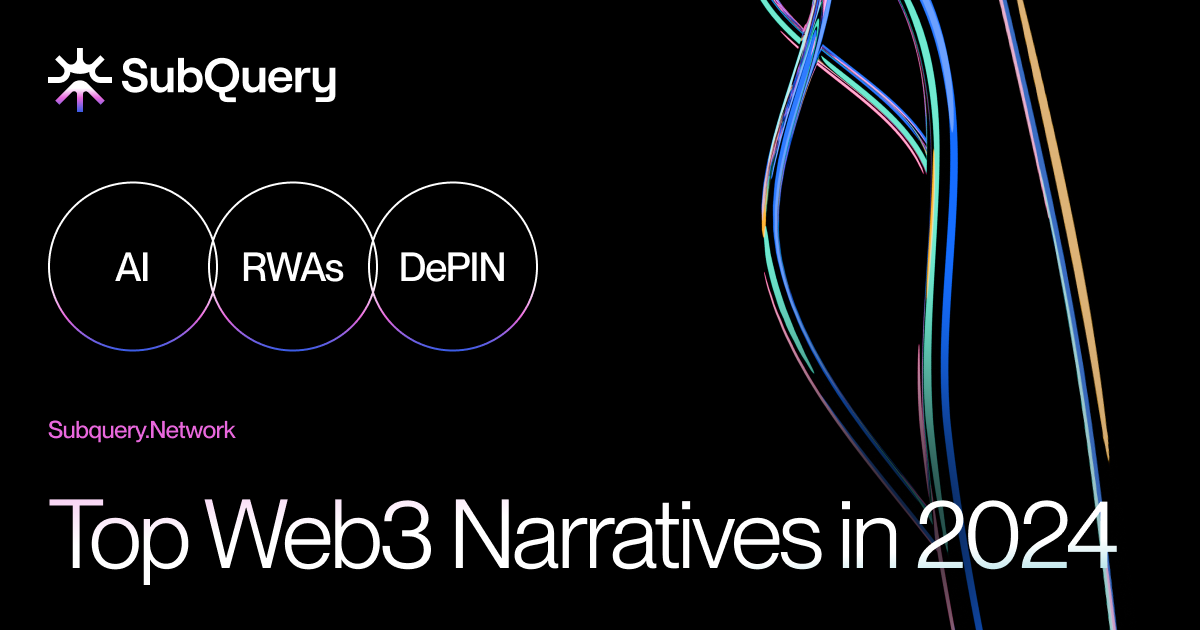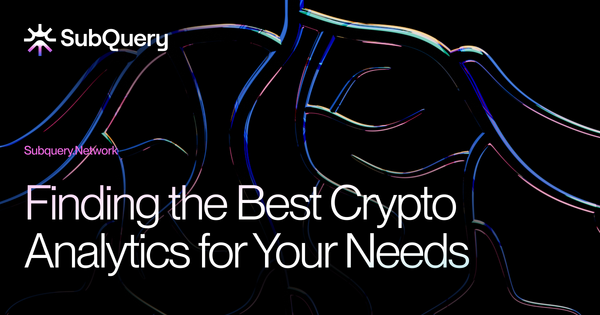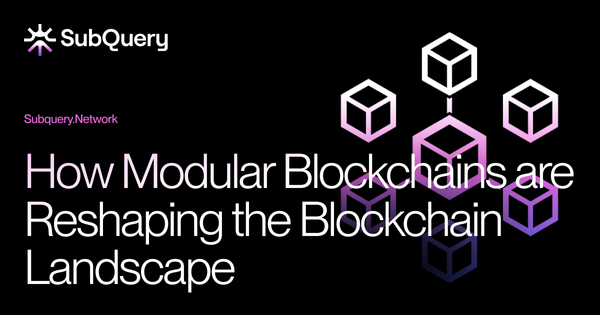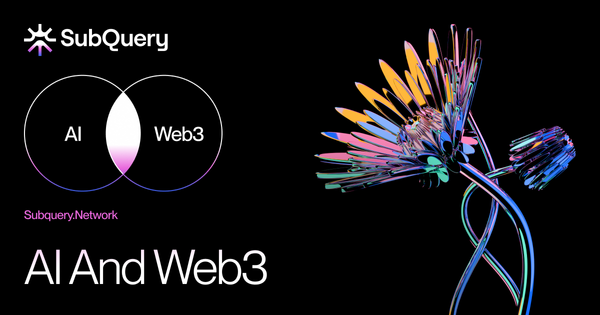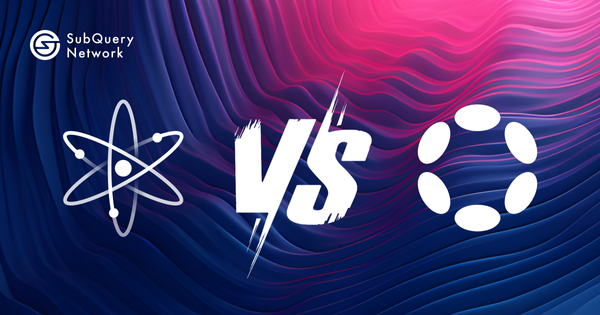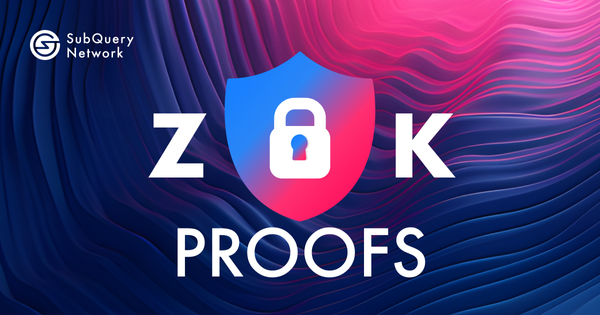The Importance of Narratives in Web3
The web3 realm is dominated by narratives that shape individuals' perceptions and valuations of digital currencies. Narratives have a profound effect on investor sentiment, market dynamics, and technology adoption.
You can position yourself for significant opportunities by staying ahead of emerging narratives. As we continue in 2024, certain narratives are poised to shape the market's direction.
In this article, we’ll dive into the top three narratives that have dominated the web3 landscape so far this year.
How to Spot Crypto Narratives
Narratives usually play out in a time-based pattern. Identifying whether the narrative is short, mid, or long-term depends on the distinct features. There are a few ways to catch narratives earlier:
- Use platforms like Coinmarketcap or CoinGecko to track sector-specific trends over time. These trends often indicate capital flowing into projects in that sector. Once you notice significant gains, research to understand the key drivers behind the narrative.
- Social intelligence is key to spotting narratives. Crypto Twitter is great for this—when people start talking about something, the buzz can create a snowball effect, drawing attention and capital to a sector.
- Some narratives are driven by events outside the crypto world. Macroeconomic changes and regulations often shape the market, especially in the short term.
After identifying a potential narrative, the next step is researching a specific project within that narrative. You can also use analytical tools like DefiLlama for a more detailed data analysis of a specific project.
Insights into Key Narratives for 2024
1. Artificial intelligence
No technology holds the potential to transform human life quite like AI. In 2023, the deepening connection between humanity and AI became evident. The launch of tools like ChatGPT and Bard sparked a mini-bull run for AI-related tokens, and the AI trend continues to generate significant excitement.
The total market cap for the AI sector in web3 today is only about $30 billion. This is negligible, considering AI will be widely adopted in the coming years. As more companies look into integrating AI and web3 solutions, the AI narrative will stand out as one of the best performers over time.
Watch out for this AI project:
Bittensor (TAO) is a decentralised network connecting machine learning models globally, functioning like a collective brain with distributed 'neurons.' These models collaborate to process information, resembling the synergy of neurons in the human brain.
Bittensor utilises a unique blockchain architecture built on the Substrate framework, the same one that powers Polkadot. The Bittensor protocol establishes a decentralised machine learning protocol that allows blockchains for seamless connectivity to be created. If you’re building on BitTensor and need an indexer, SubQuery can help with that.
SubQuery enters decentralised AI inference hosting
SubQuery has recently entered the AI space as we saw the opportunity to revolutionise AI inference hosting (essentially the key you’ll need to plug into your dApp to provide AI features to your users). The the AI inference market which is currently is dominated by major cloud providers like OpenAI and Google that charge high fees and use user data to improve their own models. We are providing a decentralised, open-source alternative for hosting AI models. In just 10 minutes, users can deploy production-ready models while benefiting from a network that protects privacy and challenges the dominance of big tech, fostering a more transparent and democratic AI ecosystem.
More details of our vision here.
2. Decentralised Physical Infrastructure Networks (DePIN)
DePIN refers to blockchain protocols that facilitate the decentralised operation of physical hardware infrastructure.
DePIN tokens are the fuel for a new model of building and maintaining physical infrastructure. Unlike traditional methods relying on centralised funding, DePIN projects leverage blockchain technology to create tokenized ecosystems. These tokens incentivize individuals to contribute resources and services to real-world infrastructure projects.
A popular DePin project is IoTeX ($IOTX), which tackles the Internet of Things (IoT) space.
IoTeX aims to create a secure and privacy-focused network for connected devices by leveraging blockchain technology and hardware modules.
Users with compatible devices can contribute to the network and earn rewards, while developers can build secure and scalable IoT applications on IoTeX. Developers building in the IoTeX ecosystem can use SubQuery to index on-chain IoTeX data.
How is SubQuery a DePIN Project
We began our journey as a DePIN business before it became a top Web3 trend by building a large-scale network for our data indexer supporting over 200 networks in web3.
Whilst developing the SubQuery Network, we created all the key components for a decentralised RPC network. This year, we’ve expanded into a full DePIN project, with our node operators running RPCs and other nodes to ensure secure, efficient communication in Web3.
3. Real World Assets
Real-world assets (RWAs) are tokens, whether fungible or non-fungible, that represent traditional financial assets on the blockchain. These tokens are linked to assets like real estate or intangible ones like treasury bonds. By tokenizing them, RWAs use blockchain to make transactions involving valuable assets more efficient.
RWAs are one of the most significant narratives for the long term because of a distinct reason.
The global value of real-world assets (RWAs) exceeds $600 trillion, yet the market cap of tokenized RWAs available on-chain today is just around $2 billion. Tokenizing even 1% of RWAs would add $6 trillion to the blockchain space—far surpassing the entire cryptocurrency market cap.
If you’re looking for exposure to RWAs, here is one project to consider:
Centrifuge is a DeFi lending protocol that enhances credit accessibility for small businesses. Centrifuge cuts the costs of traditional off-chain securitization using open-source infrastructure to reduce the intermediary costs and complexity of TradFi. We’re proud to have Centrifuge as a customer of SubQuery’s and can’t wait to see what they build.
Conclusion
The year 2024 presents a fascinating landscape for crypto narratives. New narratives like DePIN and RWAs are pushing the boundaries of blockchain technology's applications.
One thing remains constant throughout this space: the human element. Our stories, our problems, and the communities we build breathe life into these narratives. The real test of innovation lies in separating it from fads.
About SubQuery
SubQuery Network is innovating web3 infrastructure with tools that empower builders to decentralise the future - without compromise. Our flexible DePIN infrastructure network powers the fastest data indexers, the most scalable RPCs, innovative Data Nodes, and leading open source AI models. We are the roots of the web3 landscape, helping blockchain developers and their cutting-edge applications to flourish. We’re not just a company - we’re a movement driving an inclusive and decentralised web3 era. Let’s shape the future of web3, together.
Linktree | Website | Discord | Telegram | Twitter | Blog | Medium | LinkedIn | YouTube

